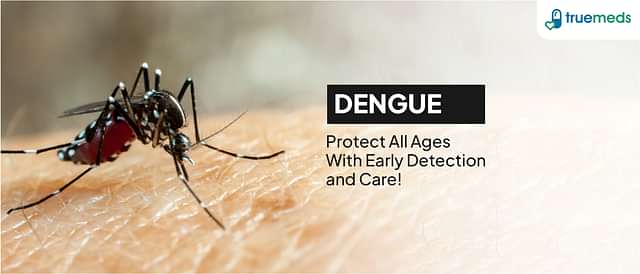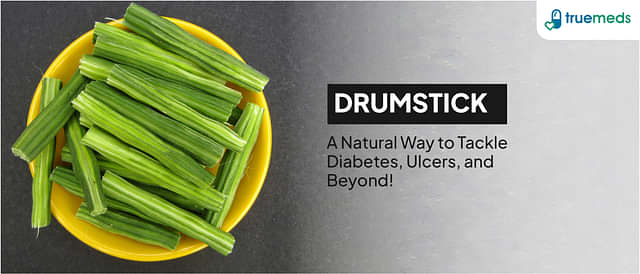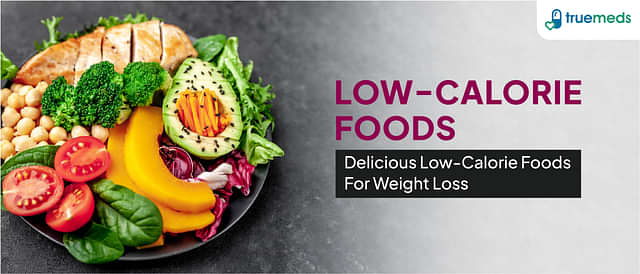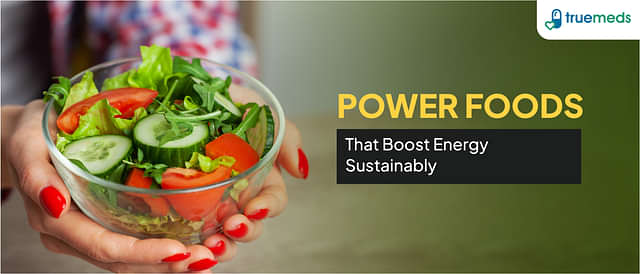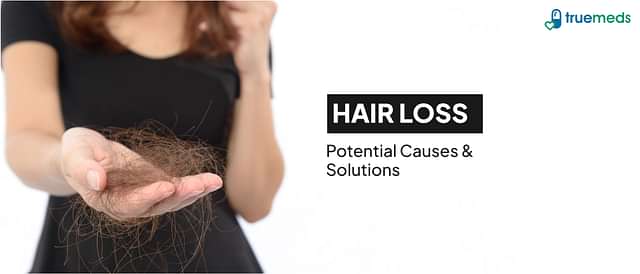Typhoid Diet: Essential Foods to Eat and Avoid for Faster Recovery
Last updated on : 26 Feb, 2025
Read time : 9 min
When battling typhoid, choosing the right food during typhoid fever is crucial for recovery. This bacterial infection can lead to severe symptoms like high fever, fatigue, and digestive issues. A well-planned diet helps manage these symptoms and supports your body’s healing process. In this guide, we’ll explore what to eat and what to avoid to help you recover from typhoid effectively. Let’s dive into the nutritional needs during typhoid.
Nutritional Needs During Typhoid
During typhoid, your body requires easily digestible foods that are rich in nutrients, calories, and fluids to combat dehydration and energy loss. Here are the key nutritional needs:
- Hydration: Plenty of fluids like coconut water, lime juice, and boiled water to prevent dehydration.
- Carbohydrates: Foods high in carbs such as boiled potatoes, porridge, and white rice to provide energy.
- Proteins: Foods like yogurt, eggs, chicken, and tofu to support recovery and immune function.
- Probiotics: Yoghurt and other probiotic-rich foods to improve gut health.
- Electrolytes: Oral Rehydration Salts (ORS) to balance electrolyte levels.
Foods To Eat During Typhoid Fever
Here are some foods to eat during typhoid fever:
1. Yoghurt
Yoghurt is an excellent choice for those suffering from typhoid fever. Its probiotic properties can help alleviate symptoms such as loose motions and disturbed bowel movements. Bifidobacteria, found in yoghurt, can improve digestive health within a few weeks, making it a valuable addition to your diet during recovery.
2. Watermelon and Grapes
Watermelon and grapes are highly recommended for typhoid patients due to their high water content and nutrient-rich profile. Watermelon aids in hydration and provides essential vitamins A and C, while grapes offer antioxidants, energy, and numerous grapes benefits that promote overall health. These fruits are easily digestible and support the body’s recovery process.
3. Boiled Potato
Boiled potatoes are a mild, starchy food that provides energy and is easily digestible for typhoid patients. They are rich in potassium, which helps replenish lost electrolytes. Ensure that the potatoes are cooked thoroughly to make them gentle on the digestive system.
4. Porridge and Daliya
Porridge and daliya (broken wheat porridge) are ideal for typhoid patients as they are easy to digest and provide complex carbohydrates and energy. These foods help sustain the body’s needs during recovery and are gentle on the stomach, reducing the risk of digestive discomfort.
5. Plenty of Fluids
Staying hydrated is essential during typhoid fever. Patients should consume ample amounts of electrolyte-fortified water, fresh fruit juices, and coconut water to prevent dehydration and replenish lost electrolytes. These fluids help maintain the body’s balance and support overall recovery.
6. Bananas
Bananas are an excellent choice for typhoid patients as they are easily digestible and rich in potassium. They provide essential vitamins and minerals and are a good source of energy. Ripe bananas are particularly recommended due to their gentle nature on the digestive system. White rice is another easily digestible food that can be included in the diet.
7. White Rice
White rice is a refined grain that is easy to digest and provides energy. It is a good option for typhoid patients as it does not put additional strain on the digestive system. Consuming white rice in small, frequent meals can help manage symptoms and sustain energy levels.
8. Bottled Water
Drinking bottled water is crucial for hydration, especially in areas where typhoid is common. It helps prevent the intake of contaminated water, which can worsen the infection. Bottled water ensures that the patient stays hydrated without risking further contamination.
9. Herbal Tea
Herbal tea is a soothing beverage that can help calm the digestive system and provide hydration. It is free from caffeine and other irritating substances, making it a safe choice for typhoid patients. Herbal teas can also offer additional health benefits due to their antioxidant properties.
10. Coconut Water
Coconut water is a natural source of electrolytes and can help replenish those lost due to fever, vomiting, and diarrhoea. It is easily digestible and provides hydration, making it an excellent choice for typhoid patients.
Diet Chart for Typhoid Patient
A well-balanced diet is crucial for managing symptoms and promoting recovery during typhoid fever. The following diet chart provides a comprehensive guide on recommended foods across various categories:
| Food Category | Recommended Foods |
| Carbohydrates | Porridge, soft rice, baked potatoes, unpolished rice, white bread |
| Proteins | Eggs, milk, paneer, yoghurt, lentils, moong dal |
| Fruits | Watermelon, grapes, bananas, applesauce, canned fruit |
| Vegetables | Boiled vegetables (potatoes, carrots, beets, squash), vegetable soup |
| Fluids | Coconut water, lime juice, roohafza, buttermilk, bottled water, herbal tea, fresh fruit juices |
| Other | Honey (for its antibacterial properties), soya beans, nuts with healthy fats |
Foods To Avoid During Typhoid Fever
Here are some foods to avoid during typhoid fever:
1. Raw Vegetables
Raw vegetables such as cauliflower, onions, cabbage, broccoli, and asparagus should be strictly avoided during typhoid fever. These vegetables are difficult to digest and can cause bloating and gas, exacerbating the discomfort associated with the illness. It is best to stick to boiled or cooked vegetables that are easier on the digestive system.
2. Fruits
While some fruits are beneficial during typhoid fever, certain varieties should be avoided. Dried fruits, pineapple, and raw berries are high in sugar and can be challenging for the stomach to digest. These fruits may worsen diarrhoea and other digestive issues, so it is advisable to steer clear of them during recovery.
3. Whole Grains
Whole grains like oats and barley are rich in fibre, which can be difficult for the already weakened digestive system to process during typhoid fever. To minimise digestive distress, it is recommended to opt for refined grains that are easier to digest and gentler on the stomach.
4. Nuts
Nuts such as almonds, walnuts, and macadamia nuts can be tough on the digestive system and should be avoided during typhoid fever. While some nuts with healthy fats may be considered, it is generally best to limit nut consumption to prevent additional discomfort.
5. Seeds
Similar to nuts, seeds like pumpkin seeds, chia seeds, and flax seeds can be difficult to digest and may exacerbate digestive issues. It is advisable to avoid these seeds during the recovery period to prevent further complications.
6. Legumes
Legumes, including black beans, chickpeas, and kidney beans, are known to produce bloating and gas, making them unsuitable for a typhoid patient. These foods can be hard on the digestive system and may worsen symptoms, so it is best to avoid them altogether.
7. Spicy Foods
Spicy foods, such as chillies, hot sauces, garam masala, and chilly flakes, should be strictly avoided during typhoid fever. These foods can cause inflammation and irritate the digestive system, exacerbating the symptoms and delaying recovery.
8. Fatty Foods
Fatty foods like ghee, butter, oil, and fried items are difficult to digest and can cause additional discomfort for typhoid patients. These foods can irritate the gastrointestinal tract and should be strictly avoided during the recovery period to promote healing and alleviate symptoms.
Common Typhoid Symptoms
Typhoid fever, caused by the bacterium Salmonella typhi, can present with a range of symptoms that vary in severity from person to person. Some of the most common symptoms include:
- High fever, often ranging from 39.4°C to 40°C
- Severe and persistent headaches
- Extreme fatigue and weakness
- Muscle and joint pains
- Significantly reduced appetite
- Nausea and vomiting, which can lead to dehydration
- Diarrhoea or constipation, resulting in fluid loss and electrolyte imbalance
If you or someone you know is experiencing these symptoms, it is crucial to seek medical attention promptly for an accurate diagnosis and appropriate treatment. In addition to medical care, a well-planned diet can play a vital role in supporting recovery from typhoid fever.
Conclusion
Managing typhoid fever requires a multifaceted approach, with nutrition being a key component. Focusing on easily digestible, high-calorie foods that provide essential nutrients and help maintain hydration is crucial for recovery. Recommended foods include options that are gentle on the digestive system and provide the necessary energy and nutrients to support the body’s healing process. Maintaining adequate hydration is also vital, and fluids like coconut water, lime juice, and ORS (Oral Rehydration Salt) solution can help replenish lost fluids and electrolytes. Consulting with a healthcare provider or a dietitian can be beneficial in tailoring a diet plan that suits individual needs and preferences, ensuring a faster and more comfortable recovery from typhoid fever.
Frequently Asked Questions (FAQ)
While no specific food can cure typhoid, a diet consisting of easily digestible, high-calorie, and nutrient-dense foods like cooked vegetables, refined grains, and low-fat dairy products may help alleviate symptoms.
To accelerate recovery from typhoid, stay hydrated with clear fluids, consume small, frequent meals of easy-to-digest foods, and follow a high-calorie, soft, and bland diet. Practising proper food safety and hygiene is also crucial.
Ripe bananas, melons, and applesauce are recommended for people with typhoid fever, as they are easy to digest and provide essential vitamins and minerals.
Antibiotics are used to treat and eliminate typhoid fever. While dietary changes can support symptom relief, they do not cure the infection itself.
Yes, you can consume low-fat or fat-free pasteurised milk, yoghurt, and cheese in moderation to provide necessary calcium and protein. However, avoid high-fat dairy products like ghee and butter.
For a speedy recovery from typhoid, eat foods like boiled or steamed vegetables, plain rice, toast, daliya, soups, and low-fat dairy products. Additionally, consume clear fluids such as clean water, clear broth, herbal teas, and coconut water to stay hydrated.
References
Disclaimer
Our healthcare experts have carefully reviewed and compiled the information presented here to ensure accuracy and trustworthiness. It is important to note that this information serves as a general overview of the topic and is for informational purposes only. It is not intended to diagnose, prevent, or cure any health problem. This page does not establish a doctor-patient relationship, nor does it replace the advice or consultation of a registered medical practitioner. We recommend seeking guidance from your registered medical practitioner for any questions or concerns regarding your medical condition.
Popular Articles
Recommended Articles
Recent Articles
Top-Selling Medicines:
...View more
Top-Selling OTC:
...View more
Company
About UsHealth ArticleHealth StoriesDiseases & Health ConditionsAll MedicinesAll BrandsNeed HelpFAQSubscribe
Registered Office Address
Grievance Officer
Download Truemeds

Contact Us
Our customer representative team is available 7 days a week from 9 am - 9 pm.
v3.7.10
Our Payment Partners











